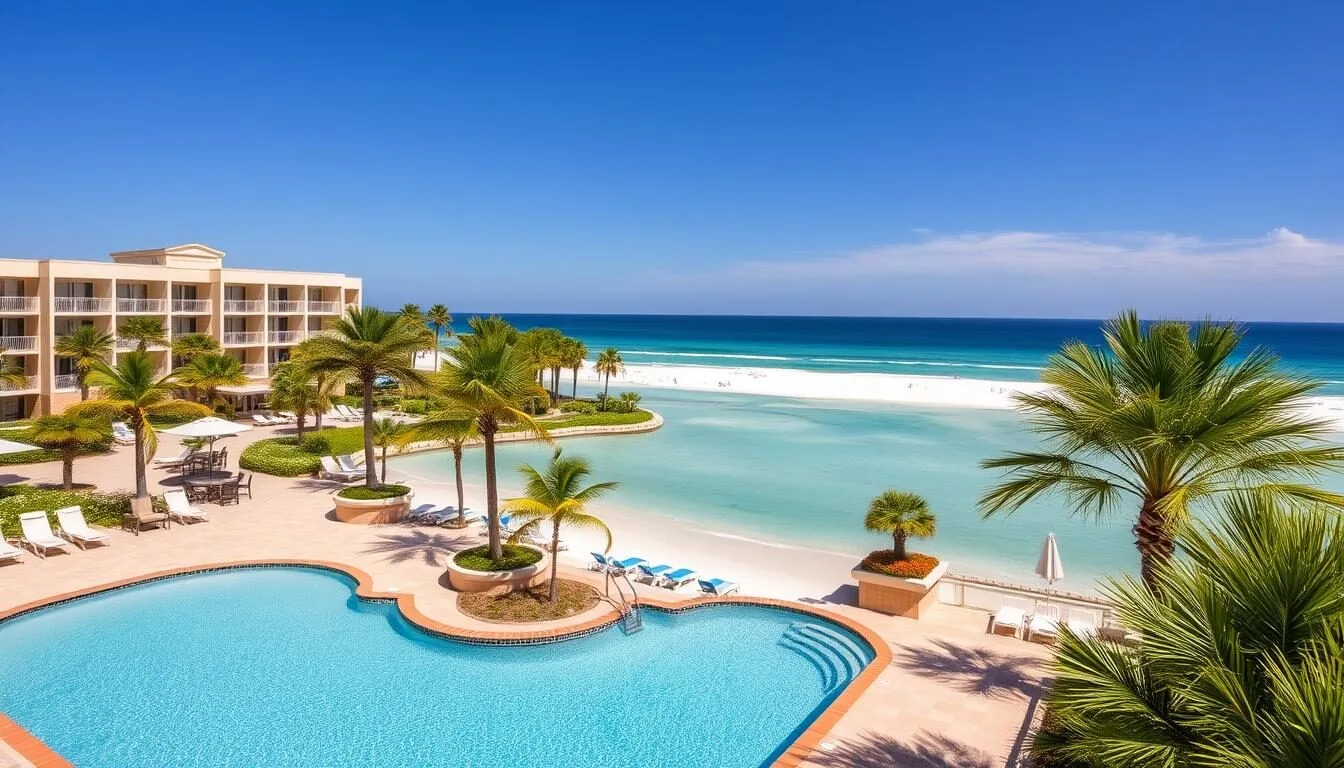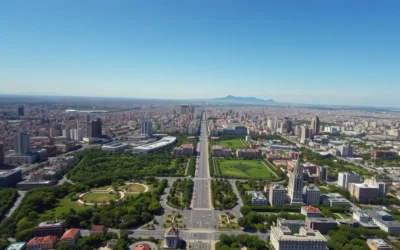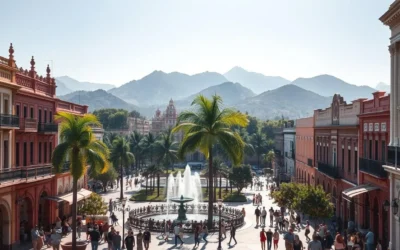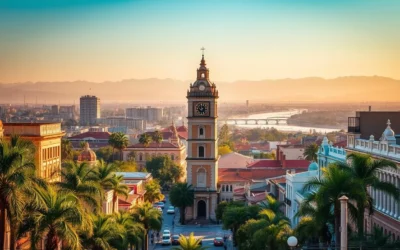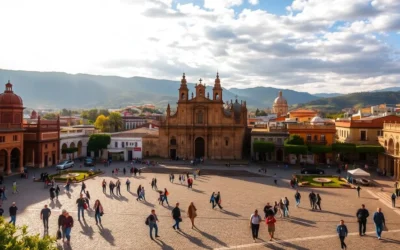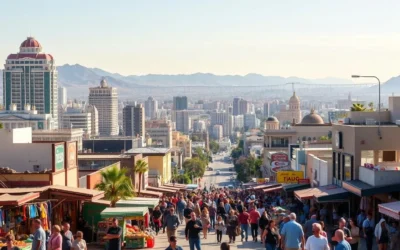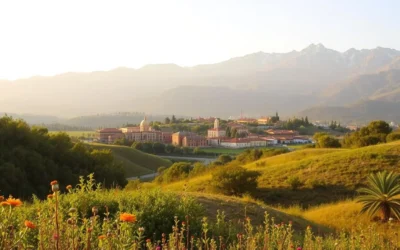✓ Accommodations ✓ Flights ✓ Rental Cars ✓ Tours & Activities
1. Mexico City, Mexico City – Population: ~9,210,000
The capital and country’s largest city; a major cultural, political, and economic hub.
2. Tijuana, Baja California – Population: ~1,923,000
Border city adjacent to San Diego; known for manufacturing and dynamic nightlife.
3. León, Guanajuato – Population: ~1,721,000
Renowned as a leather goods manufacturing center and exporter.
4. Puebla, Puebla – Population: ~1,692,000
Historic colonial city famous for its cuisine (mole poblano) and architecture.
5. Ecatepec de Morelos, State of Mexico – Population: ~1,645,000
Large suburban municipality with extensive residential areas.
6. Ciudad Juárez, Chihuahua – Population: ~1,512,000
Key border city and industrial hub across from El Paso.
7. Zapopan, Jalisco – Population: ~1,476,000
Part of the Guadalajara metro; known for religious sites and growing commerce.
8. Guadalajara, Jalisco – Population: ~1,386,000
Mexico’s second-largest metro; birthplace of mariachi and tequila traditions.
9. Monterrey, Nuevo León – Population: ~1,143,000
Industrial powerhouse with a modern skyline and strong economy.
10. Ciudad Nezahualcóyotl, State of Mexico – Population: ~1,077,000
Densely populated suburb known for urban street life and commerce.
11. Mexicali, Baja California – Population: ~1,050,000
Border city and agricultural-industrial hub opposite Calexico, California.
12. Querétaro, Querétaro – Population: ~1,050,000
Colonial UNESCO city noted for history, industry, and strong economy.
13. Culiacán, Sinaloa – Population: ~1,004,000
Capital city known for agriculture and regional cuisine.
14. Chihuahua, Chihuahua – Population: ~809,000
State capital in the Chihuahua desert, known for history and culture.
15. Naucalpan de Juárez, State of Mexico – Population: ~792,000
Industrial and commercial municipality in Greater Mexico City.
16. Mérida, Yucatán – Population: ~777,000
Colonial capital rich in Mayan heritage and Yucatán culture.
17. Álvaro Obregón, Mexico City – Population: ~727,000
Well-established borough with mid-range neighborhoods and commerce.
18. San Luis Potosí, San Luis Potosí – Population: ~724,000
Historic mining city with significant industrial growth.
19. Aguascalientes, Aguascalientes – Population: ~722,000
City famed for auto manufacturing and annual cultural festivals.
20. Hermosillo, Sonora – Population: ~715,000
Desert capital known for agriculture and Sonoran food.
21. Saltillo, Coahuila – Population: ~710,000
Industrial and textile center near Monterrey.
22. Guadalupe, Nuevo León – Population: ~674,000
Suburb of Monterrey; balanced residential and industrial zones.
23. Acapulco de Juárez, Guerrero – Population: ~673,000
Historic Pacific resort city famed for beaches and nightlife.
24. Tlalnepantla de Baz, State of Mexico – Population: ~653,000
Dense industrial and residential municipality in Greater Mexico City.
25. Cancún, Quintana Roo – Population: ~628,000
World-renowned tourist destination with beaches and resorts.
26. Santiago de Querétaro, Querétaro – Population: ~626,000
Fast-growing city with colonial charm and economic vitality.
27. Coyoacán, Mexico City – Population: ~620,000
Historic borough known for arts, plazas, and the Frida Kahlo Museum.
28. Santa María Chimalhuacán, State of Mexico – Population: ~612,000
Densely populated suburb in the eastern part of the Mexico City region.
29. Torreón, Coahuila – Population: ~609,000
Economic center of La Laguna region with strong agriculture and industry.
30. Morelia, Michoacán – Population: ~598,000
Colonial UNESCO heritage site known for Baroque architecture.
31. Reynosa, Tamaulipas – Population: ~589,000
Border manufacturing city across from McAllen, Texas.
32. Tlaquepaque, Jalisco – Population: ~576,000
Artisan community in Guadalajara metro famous for pottery.
33. Tlalpan, Mexico City – Population: ~575,000
Borough featuring both urban and semi-rural neighborhoods.
34. Tuxtla Gutiérrez, Chiapas – Population: ~537,000
Capital of Chiapas; economic and administrative hub in the south.
35. Cuauhtémoc, Mexico City – Population: ~532,000
Central borough hosting government landmarks and civic centers.
36. Puerto Vallarta, Jalisco – Population: ~300,000
Coastal resort known for beaches, tourism, and vibrant nightlife.
37. Oaxaca de Juárez, Oaxaca – Population: ~300,000
Cultural capital of Oaxaca known for indigenous heritage.
38. Veracruz, Veracruz – Population: ~300,000
Major Gulf port city with Spanish-colonial legacy and festivals.
39. Tepic, Nayarit – Population: ~300,000
Pacific coastal agricultural and commercial center.
40. Chalco de Díaz Covarrubias, State of Mexico – Population: ~280,000
Residential municipality within the Mexico City metro area.
41. Córdoba, Veracruz – Population: ~280,000
Coffee-growing center and colonial cultural city.
42. San Cristóbal de las Casas, Chiapas – Population: ~280,000
Highland town known for indigenous culture and colonial architecture.
43. Celaya, Guanajuato – Population: ~270,000
Industrial and economic city in central Mexico.
44. Pachuca de Soto, Hidalgo – Population: ~270,000
Historic mining town, capital of Hidalgo state.
45. Tlalmanalco, State of Mexico – Population: ~250,000
Semi-rural municipality on the slopes of volcanoes near CDMX.
46. Ciudad López Mateos, State of Mexico – Population: ~250,000
Suburban municipality known for residential zones.
47. Texcoco de Mora, State of Mexico – Population: ~250,000
University town east of Mexico City with archaeological significance.
48. Tehuacán, Puebla – Population: ~250,000
Second-largest city in Puebla state, known for mineral water springs.
49. Tampico, Tamaulipas – Population: ~250,000
Petroleum port city on the Gulf of Mexico.
50. Toluca, State of Mexico – Population: ~875,000
State capital known for its industrial economy and nearby Toluca Valley.
The above is subject to change.
Check back often to TRAVEL.COM for the latest travel tips and deals.
